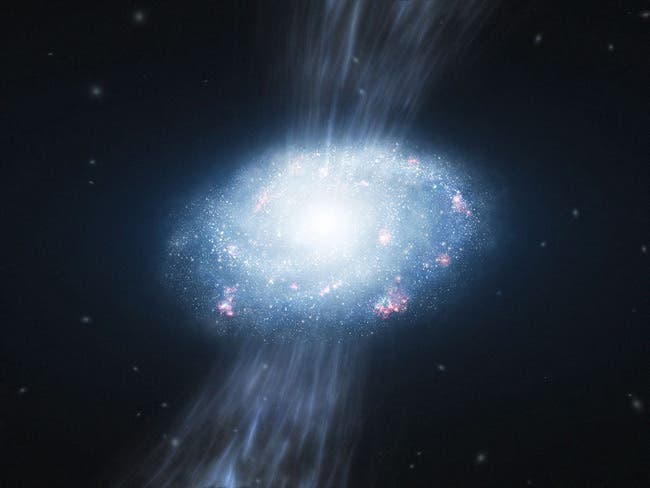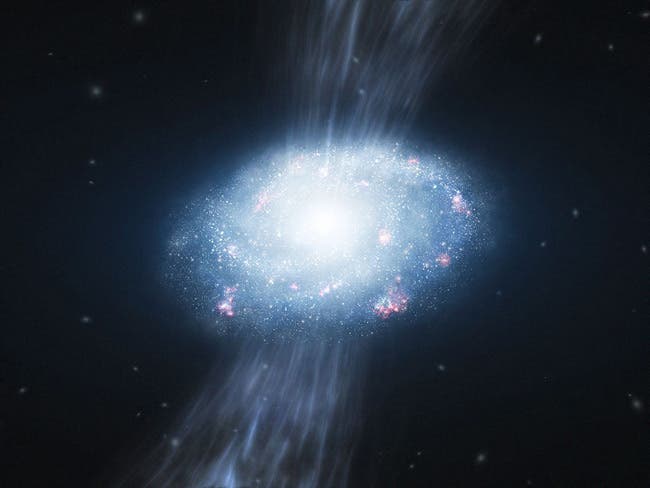When early galaxies formed, there was a surprisingly high rate of new stars being formed, which was explained by major galactic collisions; however, recent evidence suggests that in fact the answer is much simpler, and not nearly as violent.

Astronomers using the European Southern Observatory’s Very Large Telescope in Chile have observed three ancient galaxies with “patches of star formation” towards their center; they found that these galaxies were literally sucking hydrogen and helium from the space between galaxies and using it as fuel.
“It solves the problem of providing to the galaxies fuel to form their stars in a continuous way, without having to invoke violent mergers and galaxy interactions,” said study researcher Giovanni Cresci of Italy’s OsservatorioAstrofisico di Arcetri. “Those certainly exist, but these new findings show that they are not the main driver of star formation in the early universe.”
Theoretical models developed so far suggest that the earliest galaxies formed about a billion years after the Big Bang, but they were quite small, way smaller than the Milky Way, for example. But somehow they grew in stars and accumulated more and more stars, and so galactic collisions seemed to be a reasonable explanation.
However, recent evidence suggests that such a violent star formation would fade within a few million years, and the studied galaxies showed stars that lasted billions of years. Also, some galaxies showed absolutely no sign of such a collision, so a new solution had to be found.
Cresci and his colleagues concluded that early galaxies have sucked the hydrogen and helium that surrounded them and thus drove new star formation for billions of years. Their study of non-merging galaxies seems to back up their claim.
“This is the link between the large-scale structures dominated by dark matter and the local Hubble-type galaxies such as our own,” he said. “We are trying to understand how our home in the universe, the Milky Way, was built.”
Via Space.com









